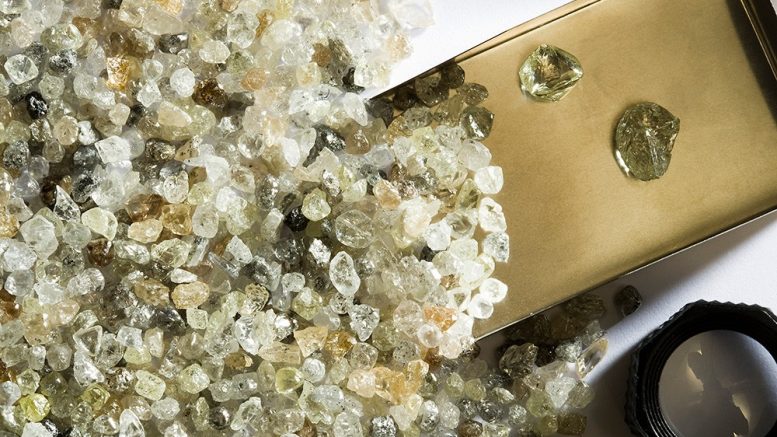
Diamonds recovered from Star-Orion South. Credit: Star Diamond
At the latest De Beers diamond auction this week, buyers shopping for the kind of stones used to make an average engagement ring were in for a sticker shock: some prices had ballooned by 10% since the last sale.
Fierce competition for stones has led some manufacturers to even buy polished diamonds to fill demand from retailers, rather than compete for rough goods to polish and cut for sale
There’s several reasons behind the surge: major retailers in the U.S. and China are buying aggressively to keep up with strong sales, while rough diamond supply is tight because De Beers and rival Alrosa PJSC have limited supply to put onto the market. Perhaps most importantly, polished diamond prices — which have long weighed on the industry — are finally rising.
Diamonds have been a big winner from lockdowns around the globe as access to rival luxury offerings was limited. That first showed with stronger-than-expected holiday sales, from Thanksgiving through to Chinese New Year, and has since continued.
“The rough market is hot. There’s enthusiastic buying across all rough categories,” said Anish Aggarwal, a partner at specialist diamond advisory firm Gemdax. “There are supply shortages at the moment. That’s creating a sense of scarcity at every stage of the pipeline.”
For some in the industry, there are worries the market could be running too hot. It takes about three months to cut, polish and sell a diamond, so stones bought cheaply at the start of the year are now being sold for a big profit. That also means those buying at today’s prices are betting that polished stones will continue to appreciate in value.
And then there’s the risk that the renewed consumer interest in diamonds, driven by the lack of competition from other luxuries such as experiences and travel, could cool as more economies open up.
For now, demand shows no sign of letting up. In the secondary market, where accredited De Beers and Alrosa buyers sell to other gem manufacturers, boxes of diamonds have been changing hands for premiums between 5% and 10%, with some select parcels even higher, people familiar with the matter said.
It takes about three months to cut, polish and sell a diamond, so stones bought cheaply at the start of the year are now being sold for a big profit
The fierce competition for stones has led some manufacturers to even buy polished diamonds to fill demand from retailers, rather than compete for rough goods to polish and cut for sale.
Russia is also looking to capitalize on the strength of demand and tight supplies, as it considers selling more rough diamonds from state stockpiles. The government is preparing a decree to increase planned sales of diamonds from the state repository, known as Gokhran, according to people people familiar with situation. Alrosa, is likely to bid at the sales to replenish its own inventories, which have declined to a record low.
Prices have been rising all year, with De Beers increasing its prices at almost every sale so far this year and pushing most larger stones up in price by between 5% and 10% this week. Some two-carat rough diamonds — the size that generally yields a 1-carat polished stone for an engagement ring — were up 10%.
Both of the big miners have also managed to sell down billions of dollars of stock that they built up last year, peaking when De Beers sold $663 million in January.
Still, last month’s sale reaped just $380 million and industry participants said they expect a similar size offering this week, while asking not to be identified discussing private information, because De Beers has little extra to sell. That promises to keep supply tight as retailers such as China’s Chow Tai Fook Jewellery Group Ltd. and Costco Wholesale Corp. continue to place big orders for polished stones.
“There’s genuine demand on both the rough and polished level,” said Aggarwal. “Ultimately, this is driven by consumers buying diamond jewelry.”
(By Thomas Biesheuvel)
No comments:
Post a Comment